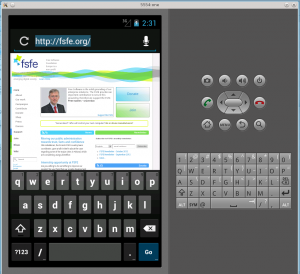Install Android Emulator in Fedora 17
Android emulator allows you to test apps and websites from an Android user’s perspective, without the need for a physical Android device. The Emulator does not work “out of the box” in Fedora however, and only a version for 32-bit machines is provided. Additional packages are required, and the GUI must be started from the command line. These steps are designed for 64-bit machines, but they should also work on 32-bit ones as well.

- Install the additional packages which the emulator depends upon:
yum install libstdc++.i686 glibc.i686 ncurses-libs.i686 libstdc libstdc++.i686 libzip.i686 libX11.i686 libXrandr.i686 SDL.i686 - Download the Linux edition of the emulator from Google: http://developer.android.com/sdk/index.html
- Extract the downloaded archive (open your Downloads folder right click on the file, “extract here”)
- Open a terminal, change directory to the folder you have just extracted:
cd ~/Downloads/android-sdk-linux/ - Run the emulator:
tools/android - Once the repository has automatically updated itself, download the packages that have been automatically selected for you (click “install packages”)
- Open the Virtual Device manage window from the menu: “tools” > “Manage AVDs”
- Click “new” to create a new AVD, use default settings
- Highlight your new device and click “start”, then “launch”
The emulator should now boot up after a few seconds and allow you to use the device.